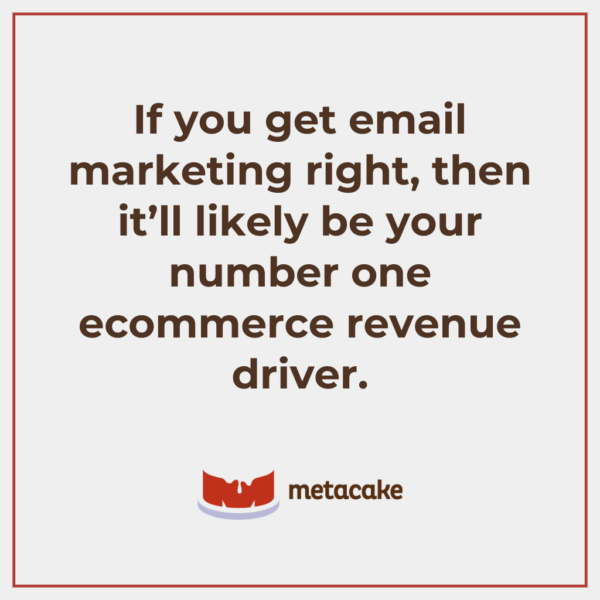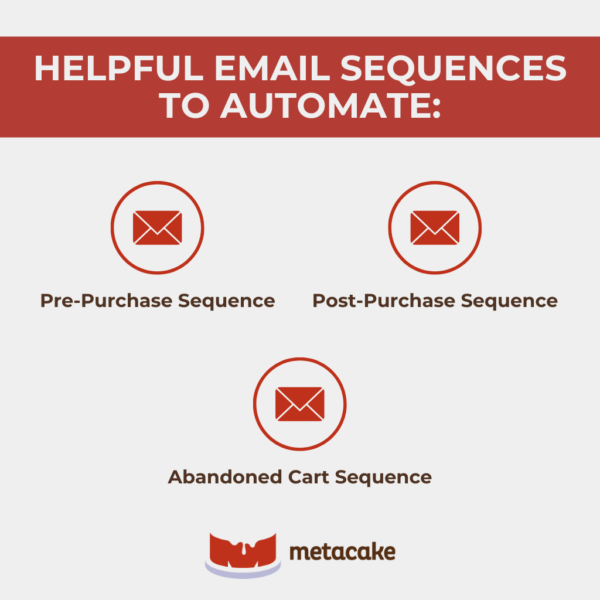Content and commerce are all the rage right now, and rightfully so. More than ever, customers are looking for brands they connect with, and content is key in building this connection with your audience.
If you’re a brand that’s looking to grow your customer base (and what brand isn’t?), content should be a key part of your strategy.
Hard sales don’t work anymore. You can’t bully a customer into a sale the way a used car salesman of the past might’ve been able to. Nobody likes this.
When a salesperson tries to bully or take advantage of you, it only makes you want to walk away.
In online sales, it’s easy to close out of a tab if you don’t like what you see. Bombarding ecommerce customers with marketing emails and offers won’t force them to convert. It’ll just cause them to disconnect from your brand.
Content, on the other hand, gives you the opportunity to sell softly and to build a real relationship.
With content, rather than making that hard sell before you even know your customers or whether your product is right for them, you can educate them. You can help potential customers learn about your products and then finally make a sale that’s the result of genuine interest.
Customers love this. They love to feel like the people they’re buying from actually care about getting them the right product and meeting their needs.
So where does email come into play?
Fitting Email Marketing Into Your Ecommerce Business Plan
Email isn’t the first touchpoint with most potential customers. It’s generally a couple of levels down in the conversion funnel. Generally, we run educational ads that link to content to first bring a potential new customer in, and then we’ll request their email address as part of a promotion.
If you don’t get their email at that point, don’t stress. Once a potential customer has visited your site, you can use retargeting ads to serve them additional content and bring them back to your site again for another chance to capture their email address.
And once you have a potential customer’s email address, you’re on the road to conversion.
Once you get an email address, you face two possible scenarios: that person has purchased from you already, or they haven’t purchased from you yet.
If they haven’t purchased, we’d recommend dropping them into a pre-purchase sequence that’s designed to educate and then provide an offer at the end of the sequence.
If they have purchased, we’d move them into a post-purchase sequence, designed to help them get the most out of their purchase, encourage them to give a review, share their purchase with friends, or cross-sell them on additional products.
Seeing the Value in Ecommerce Email Marketing
If you get email marketing right, then it’ll likely be your number one ecommerce revenue driver. This is true for most businesses we work with.
If you get email marketing wrong, you’re leaving money on the table. If you’re spending money and putting effort into building your email list, you need to make sure you know what to do with it. A high-quality list is a huge asset when used correctly and produces great returns.
Not sure if you want email marketing to be your number one revenue driver for your ecommerce business? Think again.
Email is a direct line to your potential customers and one of the only channels you have complete control over. With email marketing, you not only talk directly with ecommerce customers but you also gain more data about them over time.
Also, based on their interaction with your list and their purchases, you can create increasingly personalized content and more targeted offers going forward. In other channels, you can’t do that, which is why email is the most reliable channel you have.
That being said, here’s a note of caution: Be careful when you’re building your list. You want to build a high-quality list of people who are actually interested in your brand and your product. Don’t trick people into joining your list through massive sweepstakes or too-good-to-be-true offers. This might lead to a huge jump in your email list size, but it’ll likely be lower in quality and negatively affect the overall metrics of your ecommerce marketing performance.
You don’t want people to sign up for your list unless they’re truly interested in your product. If they do, you’ll be wasting your time and money trying to sell to a potential customer who’ll never buy.

Two Types of Effective Email Marketing
There are two different types of email marketing that we recommend pursuing in parallel: behavior-triggered sequences and promotional emails based on your marketing calendar.

Behavior-Triggered Email Sequences
These are an automated series of emails sent out based on a subscriber’s behavior. There’s no administrative effort to trigger these emails once they’re set up. If a subscriber does something that drops them into one of these sequences, the emails go out automatically.
A few sequences that we usually set up as a base for new email marketing clients are a pre-purchase sequence, a post-purchase sequence, and an abandoned cart sequence.
- The pre-purchase sequence gives you the opportunity to educate a potential customer and build a relationship with them before making an offer.
- The post-purchase sequence is intended to make sure your customer is happy with their purchase, to encourage them to share it with their friends, and to bring them back to the store to purchase again in the future.
- The abandoned cart sequence is triggered when a visitor initiates checkout but doesn’t complete the purchase. Encouraging them to return to their cart and eventually offering them a coupon helps capture visitors closest to making a purchase.
Beyond this, you might have product-specific email sequences or a VIP sequence for customers that pass a certain purchase threshold.
Over time, you should optimize these sequences to make them even more personalized.
Promotional Emails
Promotional emails, on the other hand, are based on your predetermined marketing calendar, where email is just one of the channels through which your ecommerce promos get announced.
This doesn’t mean you shouldn’t segment your list and be intentional about the offers you send to your customers. Every promotion won’t go out to every person on your list. If an offer is irrelevant to a certain segment, or if a customer has just purchased before a sale launches, it’s a good idea to exclude them from these emails.
Building a Successful Email Campaign
When you build an email campaign, whether it’s for a behavior-triggered sequence or a promotional email, here are the top things to consider to ensure your campaign is successful.
1. Pick One Message for Your Defined Audience
You want to be as personalized as possible in every email you send.
Keep it simple. Make sure there’s only one core message inside your email — focus is key. You want people to take action and click through on the main purpose of the email, so don’t make it crowded with a bunch of secondary messages.
2. Write the Copy
Say as little as possible inside the email.
As we mentioned above, you want your readers to take action, so don’t overwhelm them with text. People have short attention spans. Tease them with the offer or content, give clear CTAs, and get them to click through to your site ASAP.
Remember that getting people to your site isn’t just about conversion. Once you get them there, you can retarget them with ads to bring them back and convert them later.
Also, make sure to get several people’s eyes on this content before the email goes out, perhaps even a professional editor. There’s nothing that lowers your credibility quite like silly typos in your subject lines or headlines. (Trust us — this happens all the time.)
3. Design the Email
Your email design should be reflective of the tone of your message and the audience. It may be a text-based email or it could be a fully custom design. We recommend A/B testing these options with your audience — sometimes text-based emails outperform heavily designed emails when the message is right.
4. Test Your Subject Lines
We recommend testing three to four punchy subject lines for each email. Getting a subscriber to open your emails is the hardest part. Most people receive a ton of emails each day, and you need yours to stand out enough to warrant attention — it’s very difficult to do.
Test a few different subject lines to intrigue them (without being dishonest). Send your test out to a portion of the list, and then send the winning subject line out to the rest of your list.
5. Keep the Scent Alive
If someone reads your email and is interested enough to click through to your website, you need to maintain the scent with consistent ecommerce marketing. Make sure the message on the landing page is aligned with the message in your email.
This is a key place where brands fail, and it’s often the difference between a customer dropping off the site or continuing through to make a purchase.
6. Schedule the Email
There’s no one perfect time to send emails. This’ll depend on your audience.
You can start with best practices on what time of day to send emails and what days of the week, but make sure to test this for your own audience and your own brand. Think about your customers and their typical behavior, and schedule your emails accordingly.
Ready to Make the Most of Email Marketing for Your Ecommerce Business?
There’s no better time to invest in cultivating an email marketing campaign. Your potential customers are wading through inboxes daily, looking for the best messages and most attractive offers. Be the one to grab their attention, and see how connecting with them through email grows their love for your brand.
Need some help navigating these details and getting started? Reach out to our team today. We’ve got a wealth of ecommerce experience and expertise, and we’d love to use it to help you take advantage of all that email marketing has to offer.
